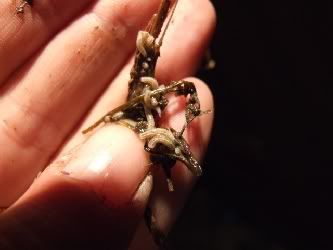sebagai seorang penternak atau pemelihara haiwan, terutama ayam. burung pon boleh kot.. confirm kite tak lepas dari terpandang ape yang dikeluarkan oleh haiwan peliharaan / ternakan kite. najis adalah bahasa sopan, selalu kite panggil berak atau taik. jangan tak tau rupe najis tu melambangkan tahap kesihatan ayam anda.
kalo korang perihatin, korang akan nampak berbagai variasi najis/taik/berak yang dilepaskan. dah alang-alang tengok, cube perhatikan samada najis tu normal ke, taik berdarah ke, berak cair ke.. biase nye tuk penternak skala besar ni takde masalah (contoh : penternak ayam daging) sebab diorang ade doktor veterinar yang akan wat pemeriksaan berkala. kalo yang kecik-kecik ni? haa.. kena la cek sendiri. camne nak tau normal ke tak normal? cube usha gambar-gambar kat bawah. yang ni aku copy n paste je dari sini. kenapa tak translate? sebab aku takut maksud die lari nanti.. hehe.. awok ni idok le pandai english edukesyen.. usha gambar, ade gak sikit penerangan die :
Normal










Picture taken by Catsmuvva
These last three pictures have shed intestinal lining in them - quite normal, not a cause for concern.
Coral coloured Urates

These are frequently deposited overnight and are quite normal
Oily and Foamy






The range of "Normal" is huge :shock:
Ceacal








These are produced from the caecum of the chicken and are mustard to dark brown froth. They are expelled every 8 to 10 droppings.
Fly Maggots

(picture curtesy of Vember)
Flies will lay their eggs on moist chicken poo and in warm weather they will very quickly hatch into small maggots.
Watery

Watery droppings can be produced by hens which are too hot. It can be a way for them to cool down by drinking a lot and losing some of their heat in frequent wet droppings. It can also be a sign that the hens are not eating enough too.
Abnormal poos

Coccidiosis produces blood in faeces.

The hen who produced this specimen was an older bird who became very thirsty.
She is producing a large amount of watery urates the cause of which is unknown, but could possibly be a kidney problem.

The hen who produced this specimen was about 25 weeks old. She went off her food and ate so little she became underweight. She held her tail down and was tired. She may have had worms and/or egg peritonitis.

Worms


picture taken by smiler43 picture taken by Lindeggs
Sulphur yellow, foamy dropping can bea sign of Blackhead (Histamonosis) which is caused by a protozoan parasite infecting the gut. It is however rare in back yard hens !
This picture was taken after 2 days treatment with flubenvet. The worms are probably Ascaridia galli, they don't cause much harm to the birds unless they are present in large numbers. It is not unkown for them to enter the reproductive tract from the digestive tract via the vent and be found inside an egg :shock:
p/s : seen enough?hehe.. kalo ade ayam atau burung yang korang bela keluar najis camtu, bawak-bawak merujuk ke veterinar yang terdekat. tak pon panggil diorang ke rumah. bertindak cepat so kalo ade pape boleh prevent segera. =)
sekian.wassalam.

2 comments:
mcm xsanggup je tgk...
------
haha..x lalu makan.
Post a Comment